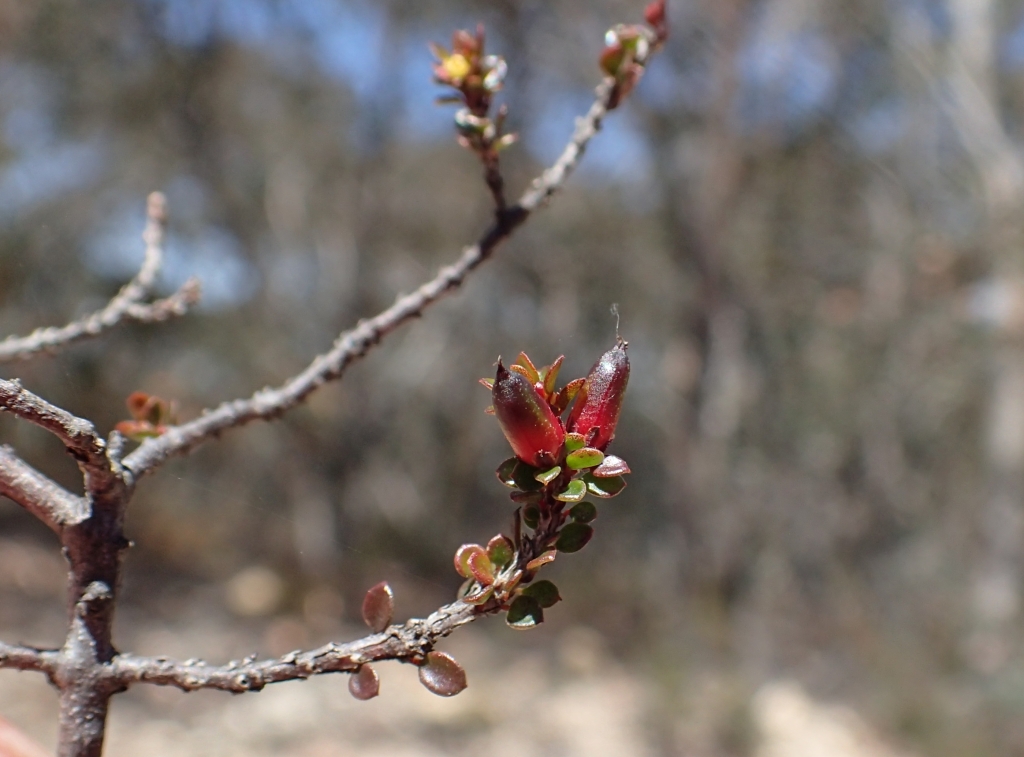Picrodendraceae
Trees or shrubs, lacking latex, monoecious or dioecious. Leaves usually alternate (rarely opposite or whorled), simple to palmate, petiolate; stipules present or absent. Inflorescences axillary, cymose, racemose, spicate or paniculate, bracteate. Flowers regular, unisexual, pedicellate; sepals 3–8, free; petals absent. Male flowers with 3–12 usually free sepals and 3–30 stamens, their filaments free or connate. Female flowers with as many sepals as males, ovary superior, 2–5- (usually 3-) locular, ovules 2 per locule, nectary disc often present below ovary, annular or lobed; styles undivided or bifid, solitary or 1 per locule. Fruit capsular, rarely a drupe. Seeds 1 or 2 per locule, often carunculate.
About 24 genera and about 96 species predominantly from S. Hemisphere (Africa, Madagascar, Central and South America, tropical Asia, New Guinea, Australia, New Caledonia) but also in SW United States; 9 genera in Australia and about 42 species.
Formerly included as a subfamily (Oldfieldioideae) within the Euphorbiaceae from which it differs in absence of latex and ovaries with 2-ovules per locule. This family has long been recognized as monophyletic because of its distinctive spiny pollen.
 Spinning
Spinning

